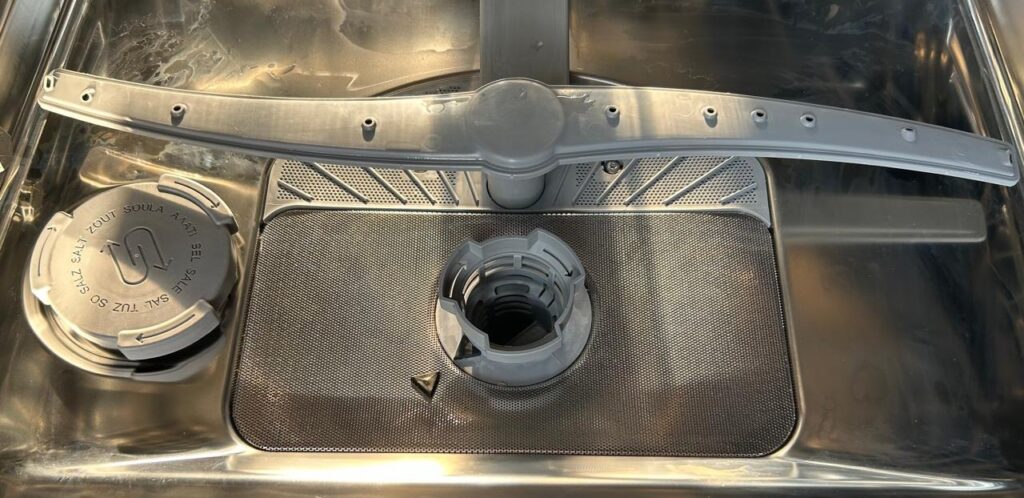
A dishwasher simplifies your daily routine, but have you ever wondered where all the grease, food particles, and debris actually go?
It’s important to understand what happens to this leftover waste inside your dishwasher — and that’s where the filter plays a crucial role, trapping the waste and keeping everything running smoothly.
When the filter becomes clogged, it can hurt cleaning performance and even cause unpleasant odors. The good news? With a little regular care, you can prevent these problems and keep your dishwasher in top shape.
In this step-by-step guide, we’ll show you how to clean your dishwasher filter — so your machine runs efficiently and your dishes always come out sparkling.
What Is a Dishwasher Filter?
A dishwasher filter is a essential component that traps food waste during the wash cycle. It prevents debris from recirculating onto the dishes, protects key parts like the spray arms, pump, and drain from clogs, and helps maintain water quality inside the machine.
How Does the Dishwasher Filter Work?
During the main wash cycle, powerful detergents break down tough stains, oily residue, and sticky leftovers. As the dirty water drains out, it flows through the filter — a vital part of the system that traps food particles and other debris.
Without a properly functioning filter, these particles could recirculate inside the dishwasher and end up back on your dishes, leaving them dirty even after a full cycle.
Identify Your Dishwasher Filter Type
A filter plays an important role in keeping your dishwasher efficient and odor-free. That’s why it’s important to identify which type of filter your machine has. Generally, there are two types of dishwasher filters: manual filters and self-cleaning filters. The type depends on the brand and model of your dishwasher.
Self-Cleaning Filter
More common in older dishwasher models.
Uses a grinder to pulverize food particles, which are then drained out.
Produces more noise during operation due to grinding.
Requires minimal manual maintenance compared to manual filters.
Manual Filter
Commonly found in newer models.
Needs to be cleaned manually, usually every 1–2 weeks.
Offers quieter operation, since there’s no grinder.
Some models come with a triple filter system that traps food waste using fine mesh screens.
A triple filter system usually includes an upper cylindrical filter and a lower flat filter. The upper filter collects larger particles and foreign objects along with very fine food particles, while the lower filter helps prevent food from recirculating onto dishes. Typically, the upper filter is twist-locked, and the lower filter can be lifted out once the upper is removed.
Manual vs. Self-Cleaning Filters
| Feature | Manual Filter (Newer Models) | Self-Cleaning Filter (Older Models) |
|---|---|---|
| Cleaning Frequency | Requires manual cleaning every 1–2 weeks | Minimal manual maintenance |
| Noise Level | Quieter Compared to Self- Cleaning Filters | Noisy (due to grinder) |
| Mechanism | Mesh screen traps food particles | Grinder pulverizes food waste |
| System Type | Some Models has triple filter system | Grinding Mechanism |
| Model Availability | Mostly in modern dishwashers | Common in older dishwashers |
Signs That Your Dishwasher Filter Needs Cleaning
Your dishwasher filter may need attention if you notice any of these signs:
Lingering odors – a bad smell coming from the dishwasher, even after a wash cycle.
Poor cleaning performance – dishes come out with food debris, grease, or cloudy marks.
Residue on the filter – visible buildup or particles stuck on the upper filter.
Water not draining well – slow drainage or standing water at the bottom of the machine.
If you experience any of these issues, it’s time to clean your dishwasher filter to restore performance and freshness.
5 Simple Steps to Clean A Dishwasher Filter Easily
Cleaning the dishwasher filter is quick and simple — it won’t take much time at all. Regular cleaning is recommended to keep your dishwasher performing at its best and to ensure spotless results with every cycle.
Step 1: Locate the Dishwasher Filter
Start by removing the bottom rack of the dishwasher. In most models, the filter is located at the bottom of the tub, right beneath the lower spray arm. You’ll usually find it in the center, where it traps food particles and debris during the wash cycle.
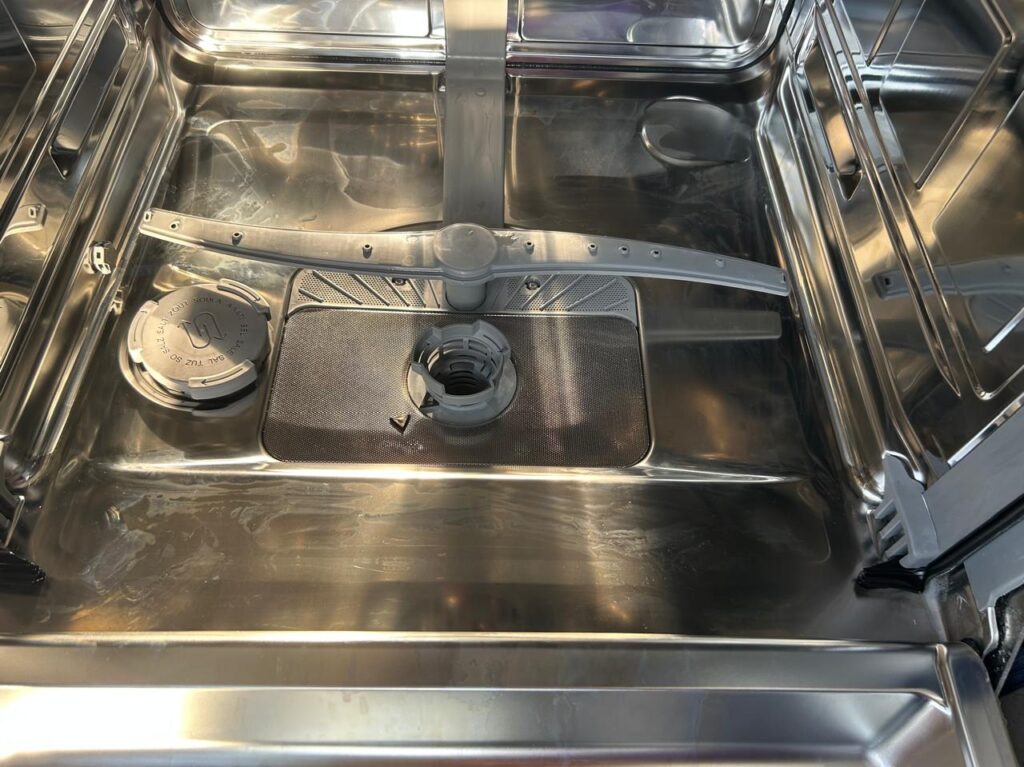
Step 2: Remove the Filter Carefully
Gently remove the filter, as a damaged filter can affect your dishwasher’s performance.
Most dishwasher filters are cylindrical and use a twist-lock mechanism — simply turn the filter counterclockwise to unlock it and lift it out.
Some models have a triple filter system, which includes an upper cylindrical filter (twist-lock type) and a lower flat filter. In this case, remove the upper twist-lock filter first, then gently lift out the lower flat filter.
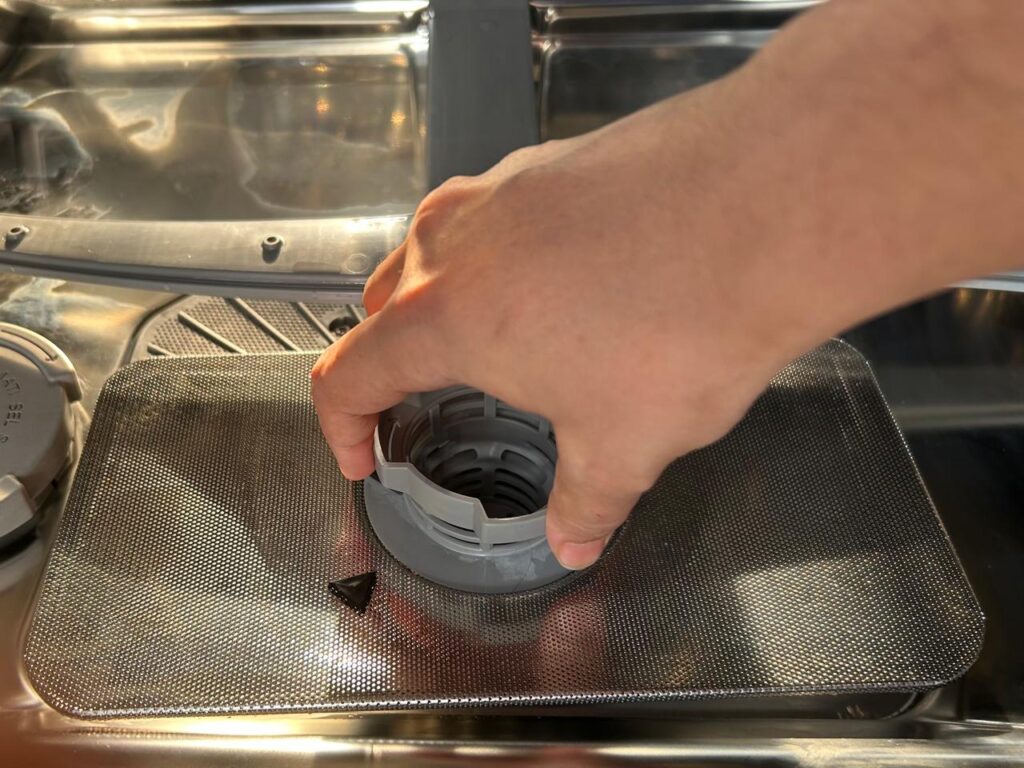
Step 3: Soak, Scrub, and Rinse the Filter
After removing the filter, separate the parts before cleaning to ensure every section is properly washed.
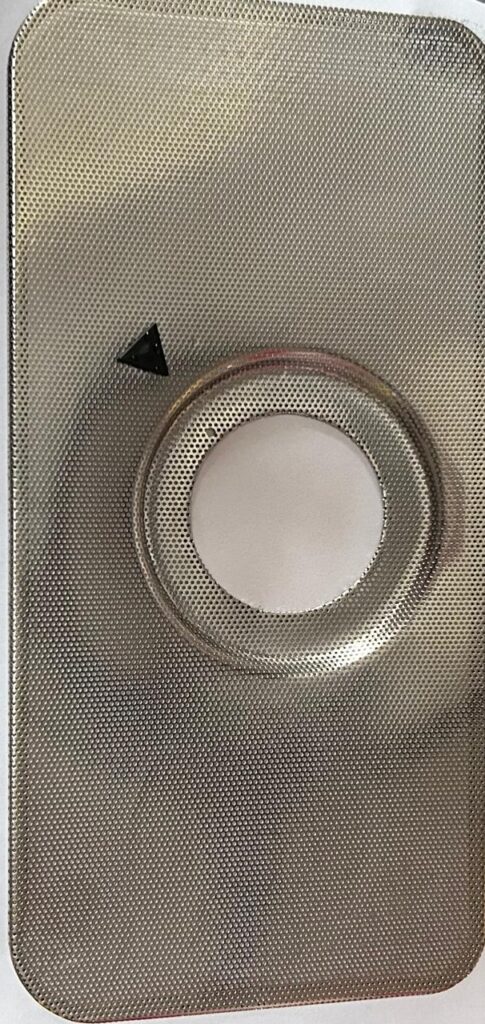
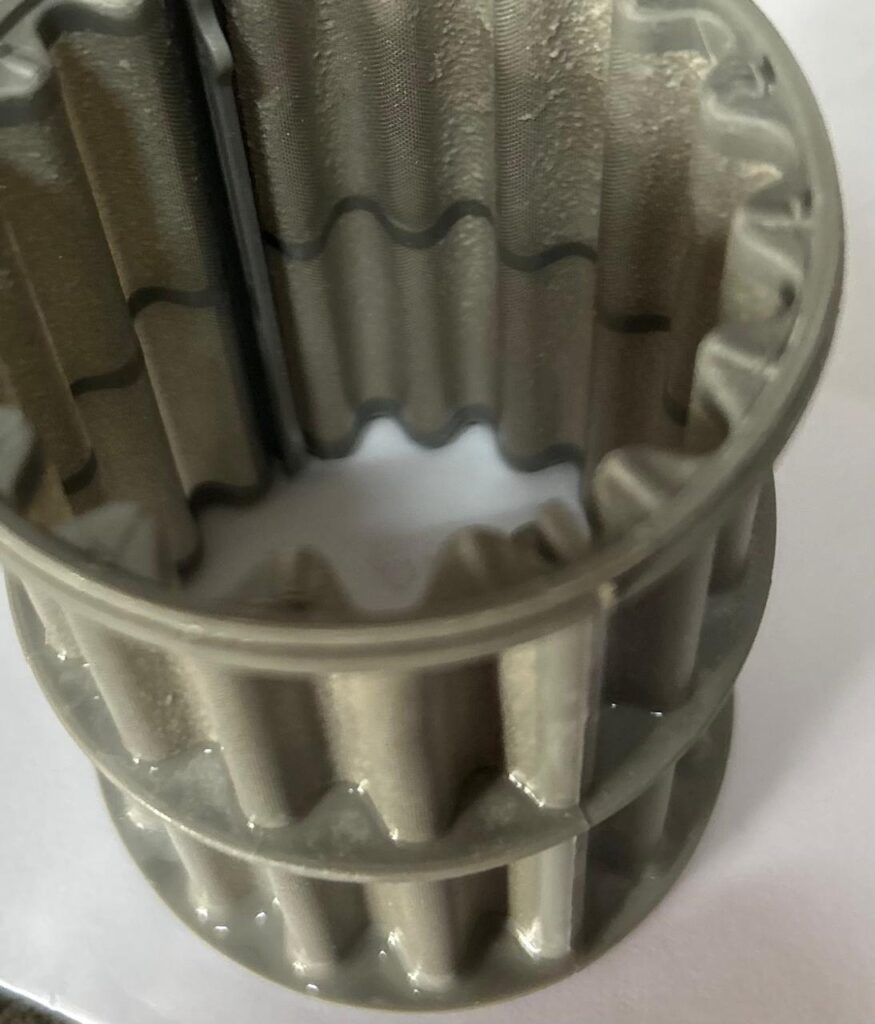
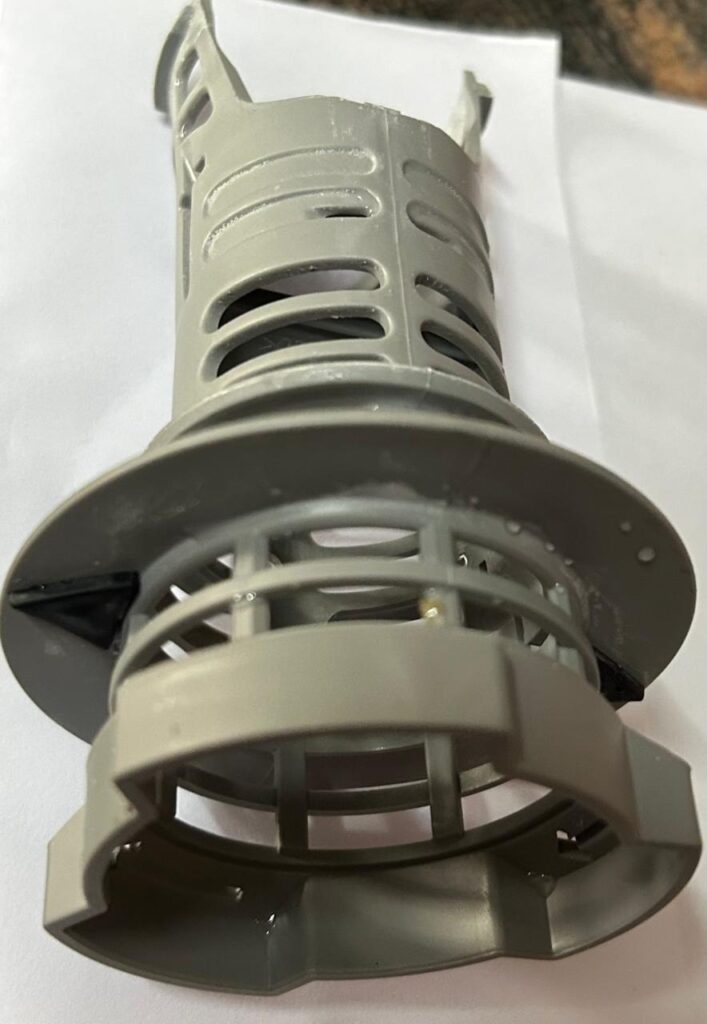
Fill a bowl or your sink with warm water and a small amount of dish detergent. Place the filter parts into the soapy water and let them soak for a few minutes.
After soaking, use a soft sponge or an old toothbrush to gently scrub away any trapped food particles, grease, or residue. Once scrubbing is complete, rinse the filter thoroughly with clean water to remove any remaining soap or debris.
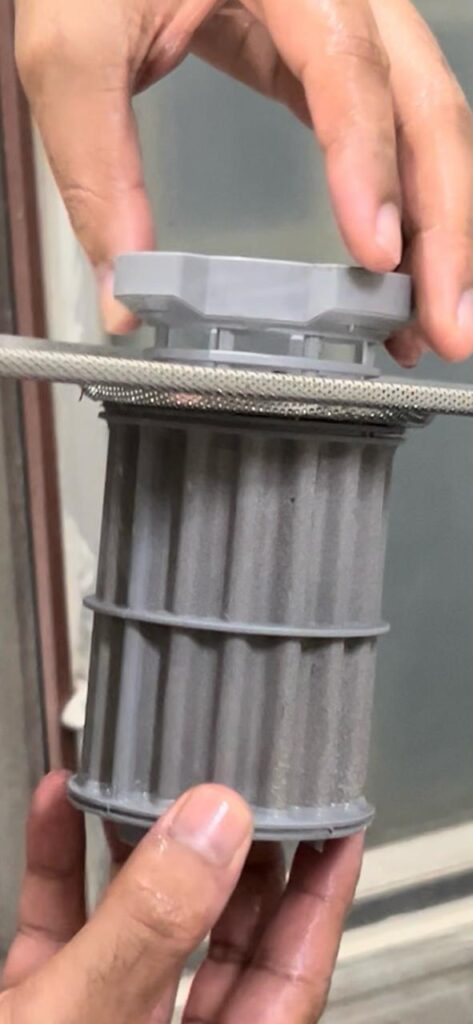
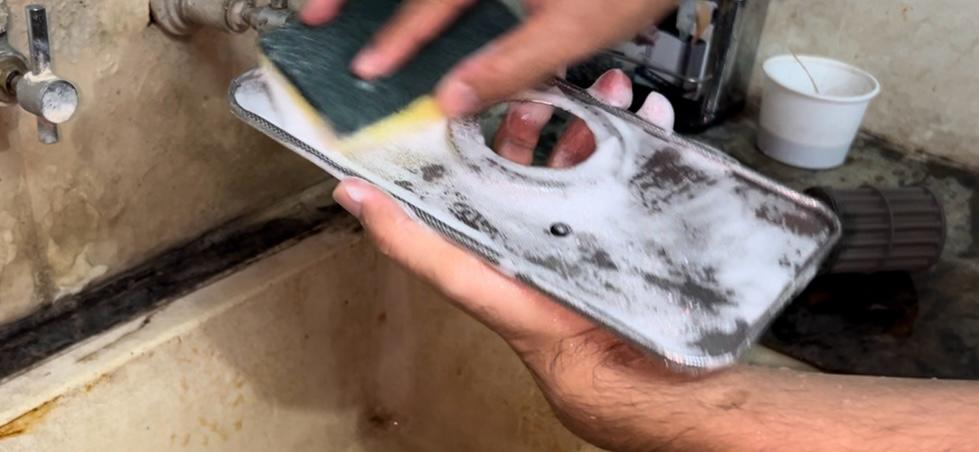
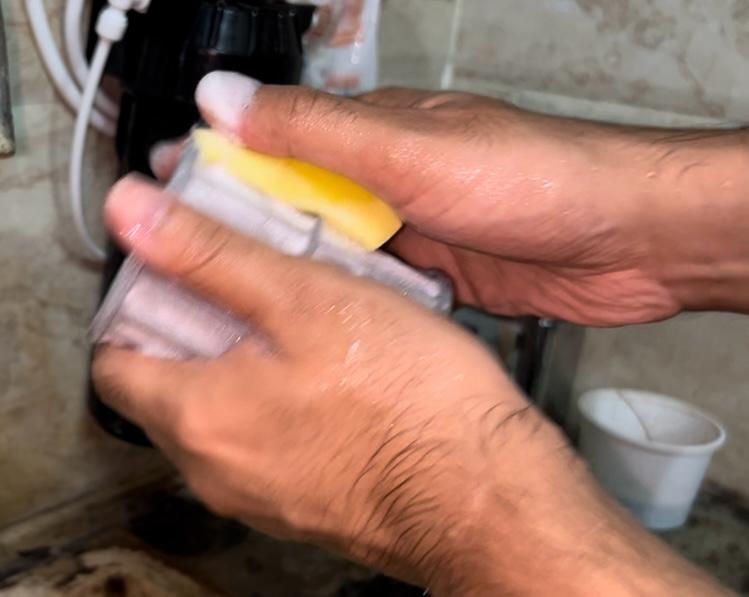
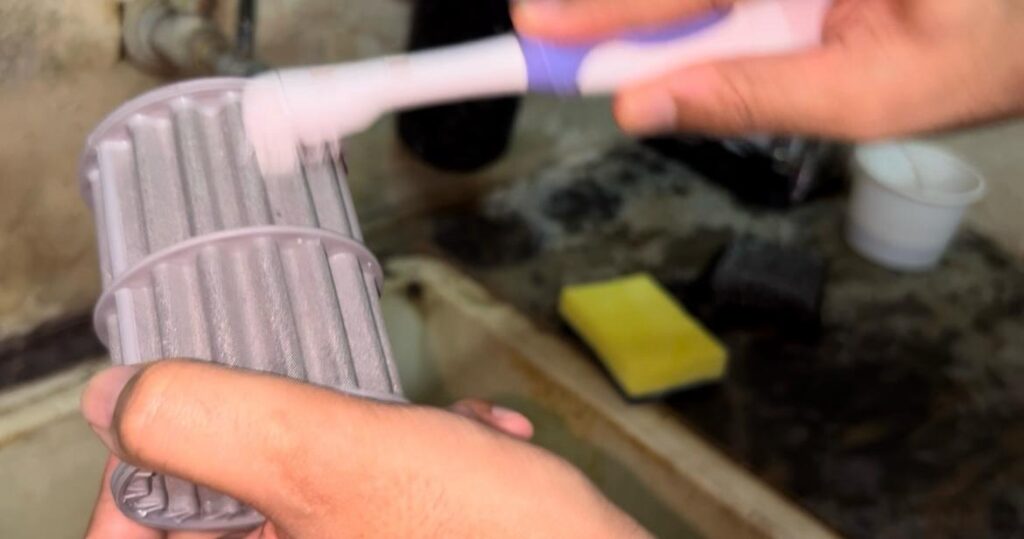
Avoid using steel scrubbers, scouring pads, or wire brushes, as these can damage the filter.
Step 4: Reinstall the Filter
After cleaning, reassemble the filter parts and place the filter back into its original position inside the dishwasher. Most filters use a twist-lock mechanism — insert the filter, then turn it clockwise until it locks securely.
Make sure the arrow on the filter aligns with the arrow inside the dishwasher, so it sits at the correct angle. A properly locked filter ensures smooth performance and prevents damage.

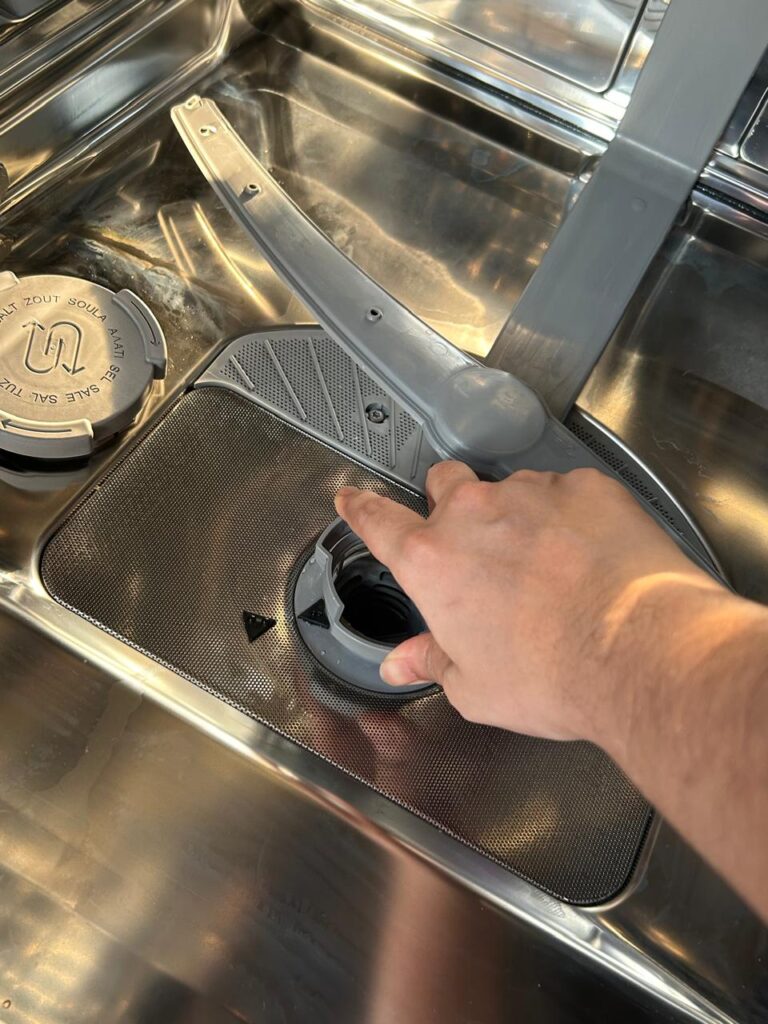
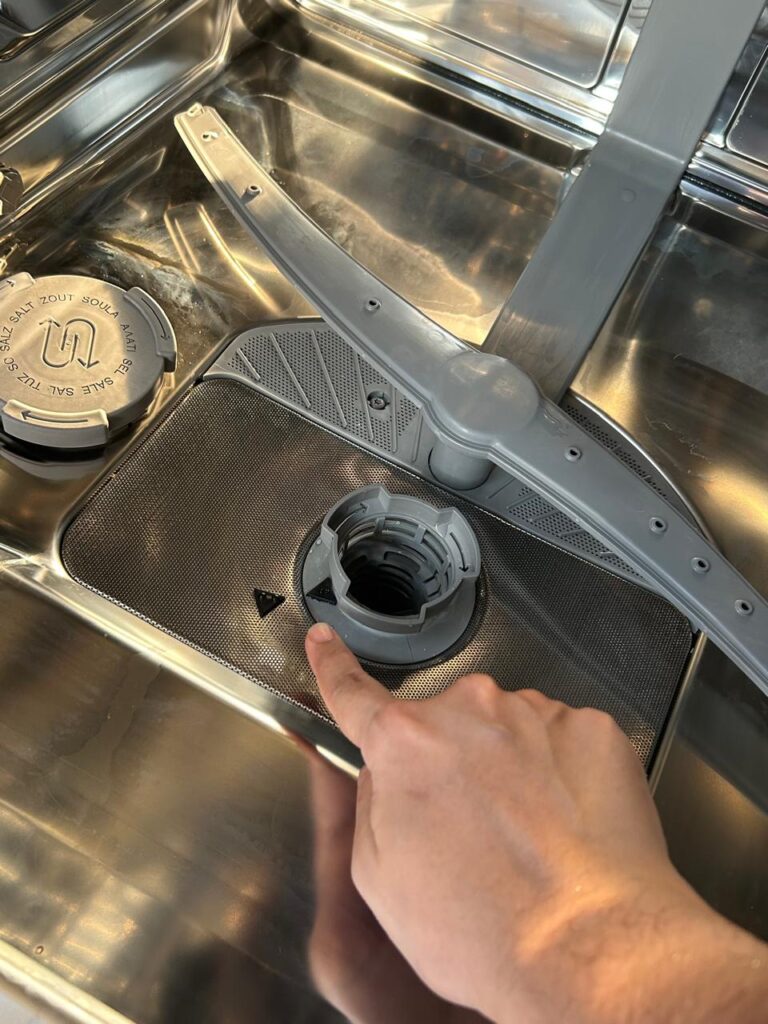
Step 5: Run a Empty Cycle
After reinstalling the filter, it’s a good idea to run an empty dishwasher cycle. This helps flush out any remaining residue and ensures the entire dishwasher is fresh and clean. Running a cycle after filter maintenance also helps confirm that the filter is securely in place and the machine is working efficiently.
What Happens If You Don’t Clean the Dishwasher Filter Regularly?
Neglecting the filter can lead to several problems over time:
Blockages in the drainage path and pump – restricting water flow and reducing efficiency.
Poor cleaning performance – food debris and soap residue may remain on dishes even after a full wash cycle.
Unpleasant odors – trapped grease and particles can cause a bad smell inside the dishwasher.
Shortened lifespan – clogged filters force the machine to work harder, which can lead to wear and damage over time.
Regular filter cleaning is an essential step to keep your dishwasher running smoothly, ensuring spotless dishes and extending the appliance’s life
If you’re still wondering whether a dishwasher is worth it, check out our guide on 10 Simple Reasons Why a Dishwasher Is Your Best Kitchen Investment
Tips to Keep Your Dishwasher Filter in Good Condition
- Scrape off food debris before loading
Always scrape off excess food particles from dishes before placing them in the dishwasher. This not only helps your filter stay cleaner for longer but also prevents clogs in key components like the spray arms, pump, and drain.
👉 Learn how to use a dishwasher properly by going through this step-by-step guide.
Avoid dishes with labels or stickers
Never load dishes that still have labels or stickers on them. These can peel off during the wash cycle and block the filter.Check for signs of problems
Keep an eye out for leakage, bad odors, or poor drainage. These are common signs that your filter may be clogged and needs cleaning.Run an empty cycle after filter cleaning
Each time you clean the filter, it’s a good practice to run an empty cycle. This ensures any leftover residue inside the dishwasher is flushed out.
FREQUENTLY ASKED QUESTIONS
Can I Replace a Damaged Dishwasher Filter?
Yes. If your dishwasher filter is damaged, there’s no need to replace the entire dishwasher. Filters are sold separately, and you can purchase one that matches your dishwasher model. Simply remove the old filter and install the new one by following the manufacturer’s instructions.
How Often Should You Clean the Dishwasher Filter?
Regular cleaning is essential to keep your dishwasher running smoothly.
If you use your dishwasher daily or heavily, clean the filter once a week.
If your usage is lighter, cleaning it once every two weeks is usually enough.
This simple habit helps prevent clogs, odors, and poor cleaning performance.
Do All Dishwashers Have a Filter?
Yes, all dishwashers are equipped with a filter to collect food waste and prevent debris from recirculating onto your dishes. Older models usually have a self-cleaning filter with a grinder, while most newer models come with a manual filter that requires regular cleaning for best performance.
How Do I Know If My Dishwasher Filter Is Clogged?
A clogged dishwasher filter often shows these signs:
Food debris on dishes even after a wash cycle
Unpleasant odors inside the dishwasher
Poor cleaning performance or cloudy glasses
Water not draining properly
Some modern dishwashers with smart connectivity may even send a mobile notification alerting you that the filter is blocked and needs cleaning.
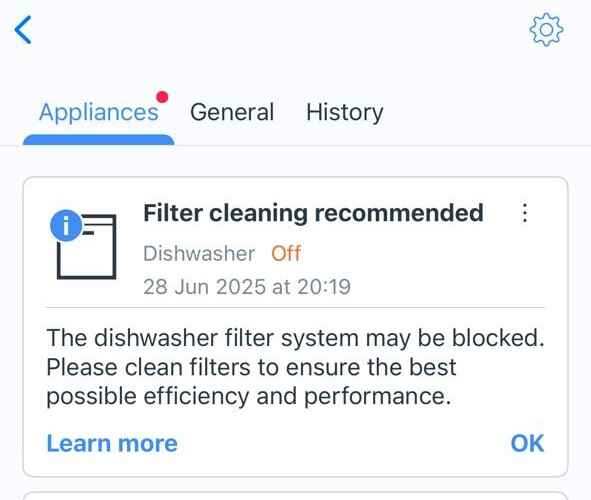
To avoid these issues, it’s best to clean the filter regularly.

